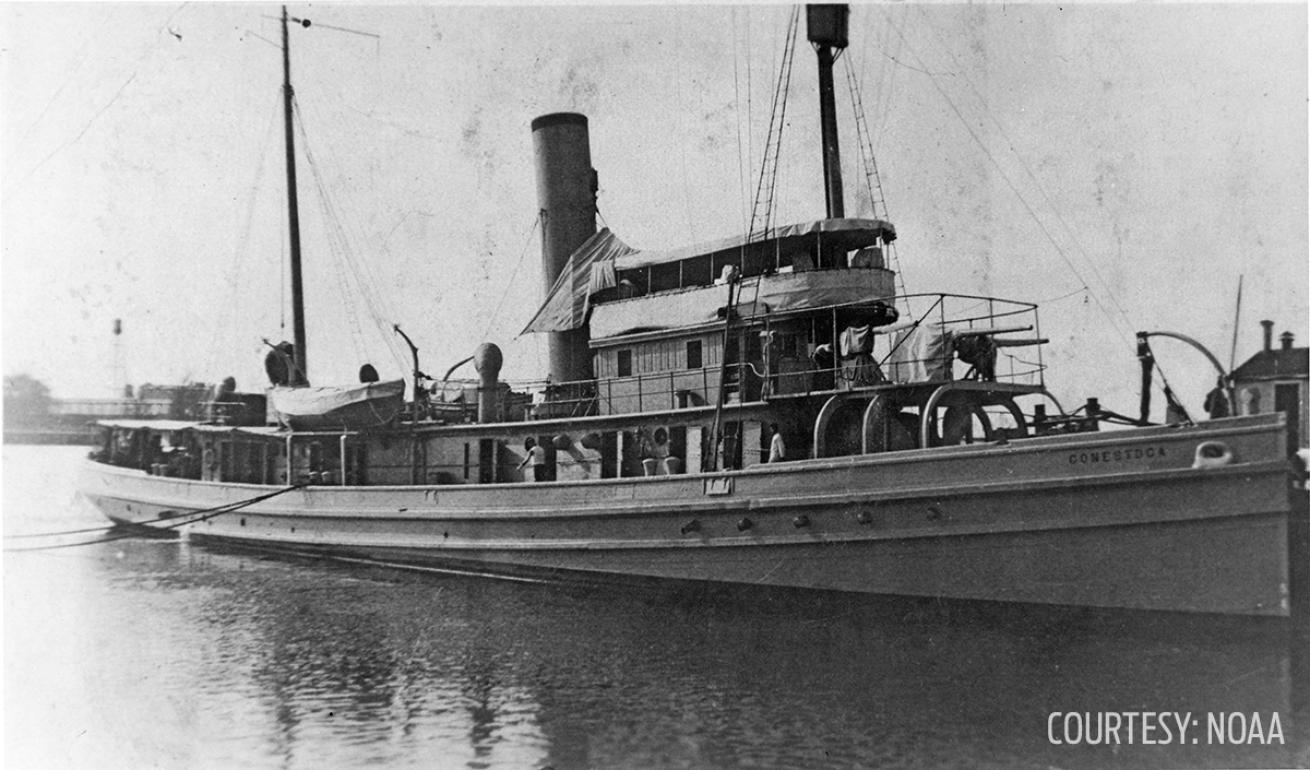The Shipwreck of USS Conestoga is Found

NOAALying in 189 feet of water, the USS Conestoga was found 95 years after it left its port. "We hope that this discovery brings the families of its lost crew some measure of closure," says deputy NOAA administrator Manson Brown.
When the USS Conestoga vanished without a trace, it became one of the greatest maritime mysteries in the United States. Now, 95 years after it sank below the choppy waters of San Francisco, the puzzle has been solved.
This spring, NOAA confirmed the tugboat had been located in the Greater Farallones National Marine Sanctuary, about 30 miles off the coast of San Francisco. The remains were originally found in 2009, but it took years of investigation from NOAA and the U.S. Navy to identify the ship.
Conestoga left its port at Golden Gate on March 25, 1921, on its way to Tutuila, American Samoa, with 56 Navy officers and sailors onboard. It was declared missing on June 30 of the same year, and has since been the last U.S. Navy ship to be lost at sea in peacetime.
NOAA believes Conestoga was towing a barge to a pit stop at Pearl Harbor.
When it didn’t show up in Hawaii, the Navy organized a sea-and-air search in the area — thousands of miles from where it actually sank.
Now, the Conestoga lies in 189 feet of water, largely intact, with no indication of human remains inside. Instead, marine life has taken over, with wolf eels, ling cod and white plume anemones thriving among the wreckage. Along with the ship’s history, a four-blade propeller, steam engine and towing winch are still on board.
“We hope that this discovery brings the families of its lost crew some measure of closure, and we look forward to honoring those who paid the ultimate price for their service to the country,” says deputy NOAA administrator Manson Brown.
While tec divers won’t find an obstacle in diving the wreck (no permits are required), the real hurdle lies in the area’s heavy great white shark population. The number of sharks has increased greatly since the designation of the marine sanctuary in 1981.
“The folks who are advertising diving out there are diving with a cage,” says Jim Delgado, NOAA’s director of maritime history. He notes several close encounters his team witnessed while researching Conestoga.
“We actually had one shark rip into a seal next to the research boat while we were working,” he says.
Even so, the Navy requests that divers drawn to Conestoga’s allure take great caution when exploring — respecting the lives lost and the new lives that have taken over.










